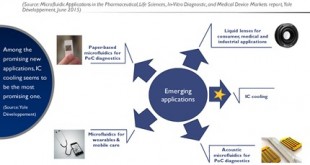Introduction
Ultra Low Frequency (ULF™) Neuromodulation, known for its potential to revolutionize chronic pain treatment, has also caught the attention of military researchers for its versatile applications. In this article, we will delve into the technology’s mechanism, its promising applications in military contexts, the requisite technologies for its deployment, and how it can benefit military personnel. Additionally, we’ll highlight some of the companies actively involved in developing ULF™ Neuromodulation technology.
Understanding ULF™ Neuromodulation
ULF™ Neuromodulation is a cutting-edge approach that harnesses the power of ultra low-frequency current waveforms to modulate the nervous system and alleviate chronic pain. Unlike traditional treatments that often come with side effects or limited efficacy, ULF™ Neuromodulation offers a unique mechanism of action.
ULF™ neuromodulation is an innovative and non-invasive approach to treating chronic pain. This procedure utilizes low-frequency ultrasound waves to stimulate the nervous system, offering effective relief for various pain conditions, including neuropathic pain, back pain, neck pain, joint pain, headaches, migraines, and fibromyalgia.
Moreover, the potential of ULF™ neuromodulation extends beyond pain management. Ongoing research explores its applications in addressing conditions such as anxiety, depression, post-traumatic stress disorder (PTSD), and traumatic brain injury (TBI). This groundbreaking technology holds great promise in improving the lives of individuals suffering from both chronic pain and these challenging neurological conditions.
ULF™ Neuromodulation works by reversibly blocking axonal conduction, the process by which pain signals are transmitted through nerve cells. This is achieved through sodium channel inactivation, a distinctive feature of ULF™ technology. By selectively targeting sodium channels, which play a crucial role in transmitting pain signals, ULF™ Neuromodulation provides controlled and reversible inhibition of pain neurons.
Benefits of ULF™ Neuromodulation
The potential benefits of ULF™ Neuromodulation are nothing short of remarkable:
- Effective Pain Relief: Clinical trials have shown that ULF™ Neuromodulation can provide substantial pain relief, with 95% of patients experiencing at least 50% reduction in pain, and 90% achieving profound relief of at least 80%.
- Quick Results: Patients undergoing ULF™ Neuromodulation therapy can experience significant pain reduction within a short time frame, often within days.
- Minimal Side Effects: Unlike some traditional pain management techniques, ULF™ Neuromodulation has been associated with minimal side effects, with patients not experiencing paresthesia (abnormal sensations) or loss of sensation or function.
- Unique Mechanism: ULF™ Neuromodulation’s mechanism of action distinguishes it from existing technologies, such as Spinal Cord Stimulation (SCS), which primarily work by stimulating neurons. ULF™ Neuromodulation’s ability to inhibit pain signals offers a fresh perspective on chronic pain management.
Technologies Required for ULF™ Neuromodulation
To harness the full potential of ULF™ Neuromodulation, several critical technologies and components are necessary:
- ULF™ Device: The core of ULF™ Neuromodulation is the device itself, which generates and delivers precise ultra low-frequency current waveforms to target pain neurons. This device must be highly sophisticated, reliable, and capable of real-time adjustments.
- Sensors and Feedback Systems: Advanced sensors and feedback mechanisms are crucial to monitor the patient’s neural responses and adjust the treatment parameters accordingly. This ensures the therapy remains effective and safe.
- Data Analytics: Data analytics software is essential for processing and interpreting the vast amount of data generated during ULF™ Neuromodulation sessions. It helps clinicians make informed decisions and optimize treatment plans.
- Cybersecurity Measures: As with any medical technology, cybersecurity is paramount to protect patient data and ensure the device’s integrity. Robust cybersecurity measures are vital to prevent unauthorized access and potential risks.
Applications for Military
Chronic pain is a major health problem, affecting millions of people worldwide. It can be caused by a variety of factors, including injuries, diseases, and infections. Chronic pain can have a significant impact on a person’s quality of life, making it difficult to work, sleep, and enjoy activities.
ULF™ neuromodulation is a new and promising treatment for chronic pain. It is a non-invasive procedure that uses low-frequency ultrasound waves to stimulate the nervous system. ULF™ neuromodulation has been shown to be effective in relieving chronic pain in a variety of conditions, including Neuropathic pain, Back pain, Neck pain, Joint pain, Headache, and Migraine, Fibromyalgia.
ULF™ neuromodulation is also being investigated for its potential to treat a variety of other conditions, including: Anxiety, Depression, Post-traumatic stress disorder (PTSD), and Traumatic brain injury (TBI)
Military applications
ULF™ neuromodulation has the potential to be a valuable tool for the military in the treatment of chronic pain and other conditions. Chronic pain is a common problem among military personnel, and it can be caused by a variety of factors, including combat injuries, training injuries, and exposure to toxins. ULF™ neuromodulation could be used to treat chronic pain in military personnel without the need for surgery or medication. This could help to improve their quality of life and make them more productive members of the military.
ULF™ Neuromodulation holds several promising applications for military contexts:
- Pain Management for Combat Injuries: Military personnel often face injuries and chronic pain resulting from combat or strenuous training. ULF™ Neuromodulation can provide effective pain relief without the need for long-term medication use, enabling quicker recovery and readiness.
- Stress and PTSD Management: Chronic stress and post-traumatic stress disorder (PTSD) are prevalent among military personnel. ULF™ Neuromodulation’s potential in modulating neural responses could offer therapeutic benefits for managing these conditions.
- Enhancing Cognitive Performance: Research suggests that ULF™ Neuromodulation may influence cognitive functions. In military settings, this could be explored to improve cognitive performance, alertness, and decision-making among personnel.
- Non-Invasive Medical Care: ULF™ Neuromodulation aligns with the military’s pursuit of non-invasive medical technologies that reduce the need for invasive procedures and medications, ensuring soldiers remain combat-ready.
Companies Developing ULF™ Neuromodulation Technology
Several companies are actively involved in the development of ULF™ Neuromodulation technology including Presidio Medical (USA), Neuromod Devices (USA), NeuroMetrix (USA),
Neuromodulation Systems (Netherlands), and ElectroCore (UK)
These companies are developing a variety of ULF™ neuromodulation devices, including implantable devices, wearable devices, and non-invasive devices.
Presidio Medical is developing an implantable ULF™ neuromodulation device for the treatment of chronic pain. The company’s device has been shown to be effective in relieving chronic pain in a variety of conditions, including neuropathic pain, back pain, and neck pain.
Neuromod Devices is developing a wearable ULF™ neuromodulation device for the treatment of chronic pain. The company’s device is a small, lightweight device that can be worn on the body. The device has been shown to be effective in relieving chronic pain in a variety of conditions, including neuropathic pain, back pain, and neck pain.
NeuroMetrix is developing a non-invasive ULF™ neuromodulation device for the treatment of chronic pain. The company’s device is a small, handheld device that can be used to stimulate nerves in the body. The device has been shown to be effective in relieving chronic pain in a variety of conditions, including neuropathic pain, back pain, and neck pain.
Neuromodulation Systems is developing a variety of ULF™ neuromodulation devices for the treatment of chronic pain and other conditions. The company’s devices are both implantable and non-invasive. Neuromodulation Systems’ devices have been shown to be effective in relieving chronic pain in a variety of conditions, including neuropathic pain, back pain, and neck pain.
ElectroCore is developing a non-invasive ULF™ neuromodulation device for the treatment of migraine and other headache disorders. The company’s device is a small, handheld device that can be used to stimulate nerves in the head. The device has been shown to be effective in preventing and treating migraine attacks.
These are just a few of the companies that are developing ULF™ neuromodulation technology. ULF™ neuromodulation is a rapidly developing field, and new companies are entering the market all the time. As ULF™ neuromodulation technology continues to develop, we can expect to see new and innovative ULF™ neuromodulation devices for the treatment of a variety of conditions.
Conclusion
ULF™ Neuromodulation, initially developed as a breakthrough in chronic pain treatment, holds significant promise for military applications. With the right technologies in place, including sophisticated ULF™ devices, advanced sensors, data analytics, and robust cybersecurity measures, the military can leverage this technology to enhance the well-being and readiness of its personnel. As research and development in ULF™ Neuromodulation continue to progress, it is poised to become a valuable asset in military healthcare and performance enhancement, with companies like Presidio Medical leading the way in its development.
 International Defense Security & Technology Your trusted Source for News, Research and Analysis
International Defense Security & Technology Your trusted Source for News, Research and Analysis


